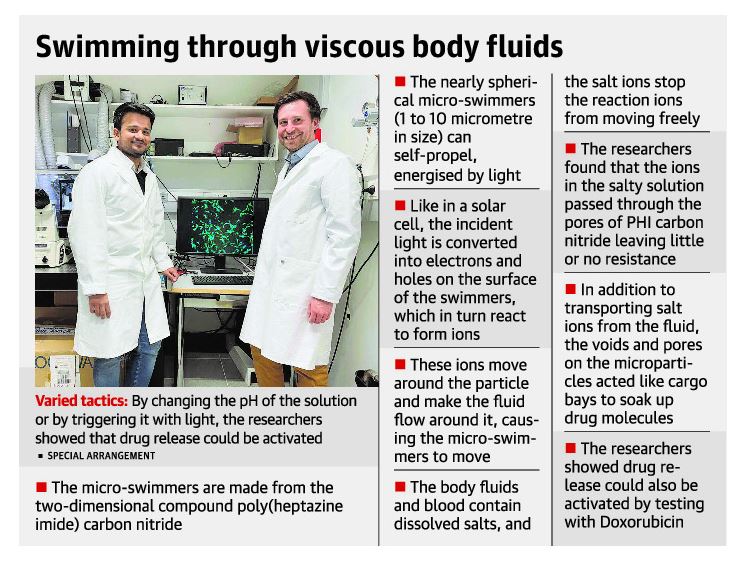ForumIAS announcing GS Foundation Program for UPSC CSE 2025-26 from 27th May. Click Here for more information.
Contents
What is the News?
Researchers have found that it is possible to use light as a fuel to move microbots in real-body conditions for intelligent drug delivery.
What have the researchers developed?

Researchers have developed a microbot made from the two-dimensional compound poly (heptazine imide) carbon nitride (aka PHI carbon nitride).
These microbots are like miniaturized humans. They range from 1-to 10 micrometres (a micrometre is one-millionth of a meter) in size and can self-propel when energized by shining light.
How do these microbots swim?
The PHI carbon nitride microparticles are photocatalytic. This means that, just like in a solar cell, the incident light is converted into electrons and holes.
These charges drive reactions in the surrounding liquid. This reaction combined with the particle’s electric field makes the microbots (micro swimmers) swim.
Hence, as long as there is light, electrons and holes are produced on the surface of the swimmers, which in turn react to form ions and an electric field around the swimmer. These ions move around the particle and cause fluid to flow around the particle. So this fluid flow causes the microbots to swim.
What is the significance of this development?
This development has shown that it is possible to have microrobots streaming through blood or through other fluids in the human body, which are driven by light and can carry drugs to cancer cells and drop off the medication on the spot.
Source: This post is based on the article “‘Micro-swimmers’ may soon help with drug delivery” published in The Hindu on 10th April 2022.




